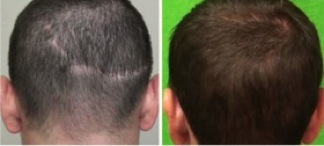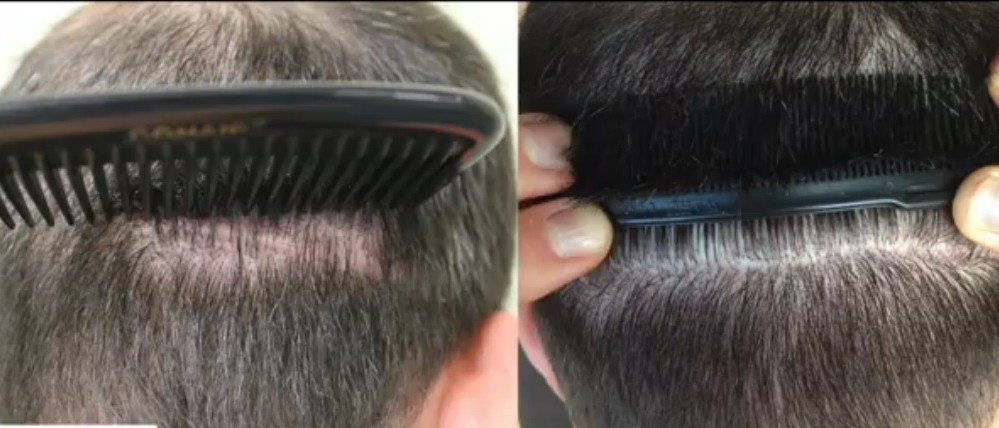Choosing Between Follicular Unit Extraction and Strip Surgery : How Strip Surgery Works
Strip surgery harvesting removes a long, horizontal chunk of flesh from the back and/or sides of the scalp to be cut up into tiny donor grafts. For years it has been a commonly used method, and although it can be executed well, strip surgery innately has some major disadvantages that follicular unit extraction does not have.
Dissimilar to FUE, strip surgery excises donor grafts from the region of the scalp where each hair shaft is densest in circumference. Many patients who’ve had a strip procedure are left unsatisfied with the abrasive, unnatural-looking hairline that results. Hairline and temple point hairs are naturally fine and gradually thicken toward the posterior scalp, thus a reconstruction should mimic this design.
Strip surgery also leaves an indelible linear scar—often an embarrassment to the bearer. The concealment of this scar forces the recipient to sport a hairstyle of longer growth. Any situation in which the scar is in danger of being exposed—such as swimming or in windy weather—often causes the recipient to feel self-conscious. Many strip surgery patients pursue follicular unit extraction in the long run to repair the disadvantages of the former.

Choosing Between Follicular Unit Extraction and Strip Surgery : How Follicular Unit Extraction Works
Follicular Unit Extraction also called FUE is the harvesting of microscopic donor grafts in their natural clusters (1-4 hairs), called follicular units. While this method requires longer procedural hours, and the highest surgeon skill level, it is not as invasive as strip surgery and proffers a faster healing time. Individual graft excision also leaves visually negligible scarring.
The microscopic punch wounds made for each donor graft are approximately 1mm in size, which means there is no linear scar whatsoever. Follicular unit extraction also enables the refined hairline construction to mimic nature, since finer donor grafts can be harvested from behind the ears and the nape of the neck. This specified graft harvest is impossible with strip surgery.
Additionally, UGraft FUE facilitates the use of non-head hair, with body hair transplantation. This relatively new niche makes the donor supply vastly larger. Patients who’ve diminished their scalp donor supply with failed strip surgery procedures, or whose pattern baldness is extremely advanced, now have a viable treatment option with the innovations of follicular unit extraction.

